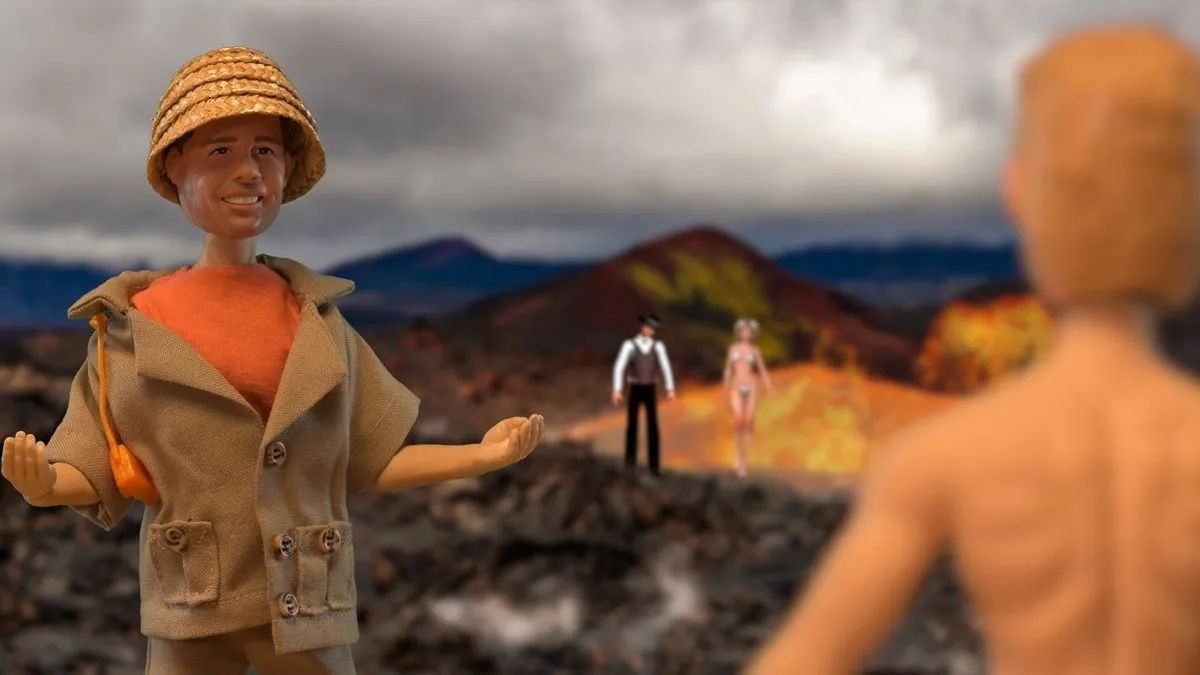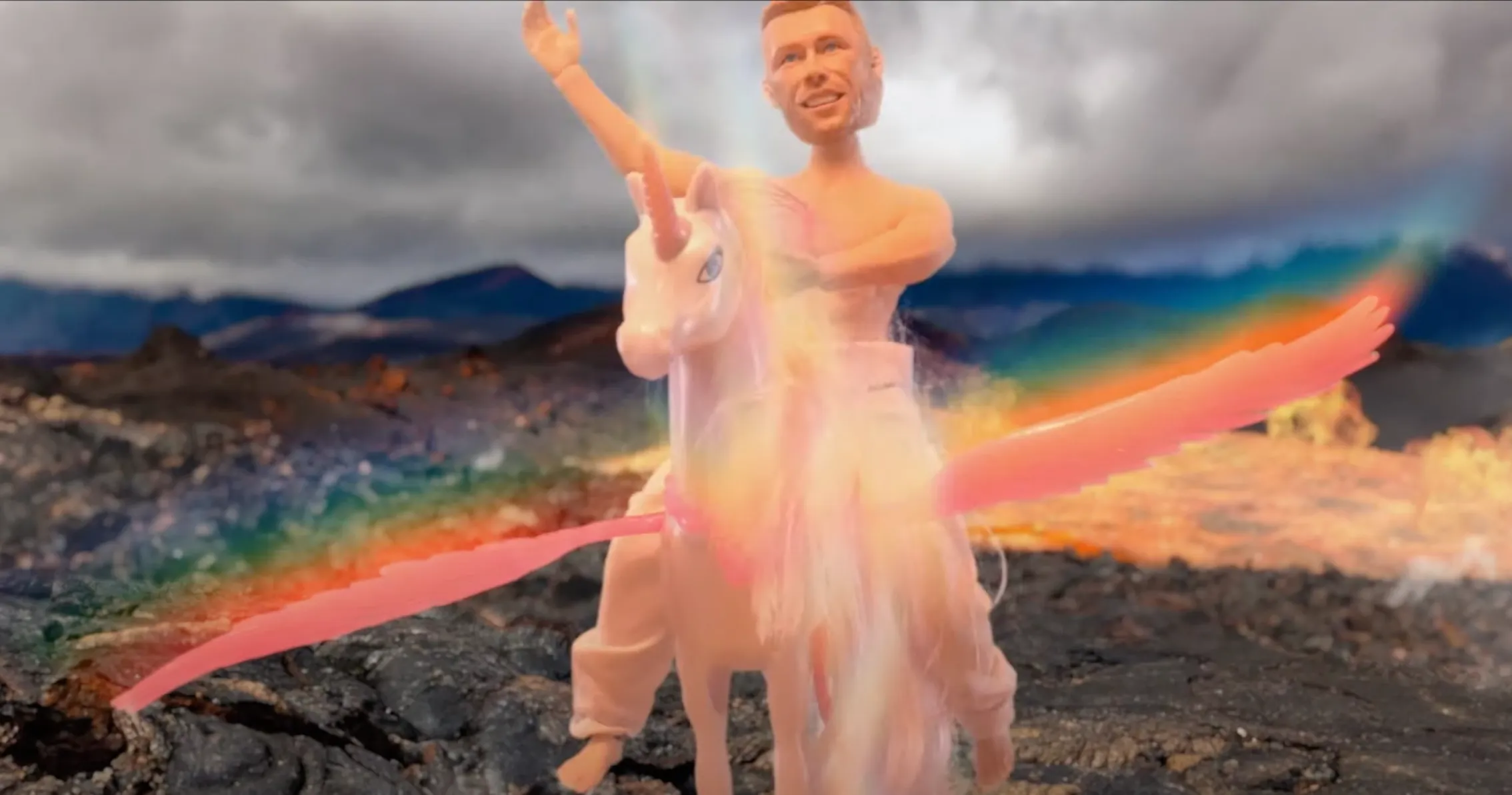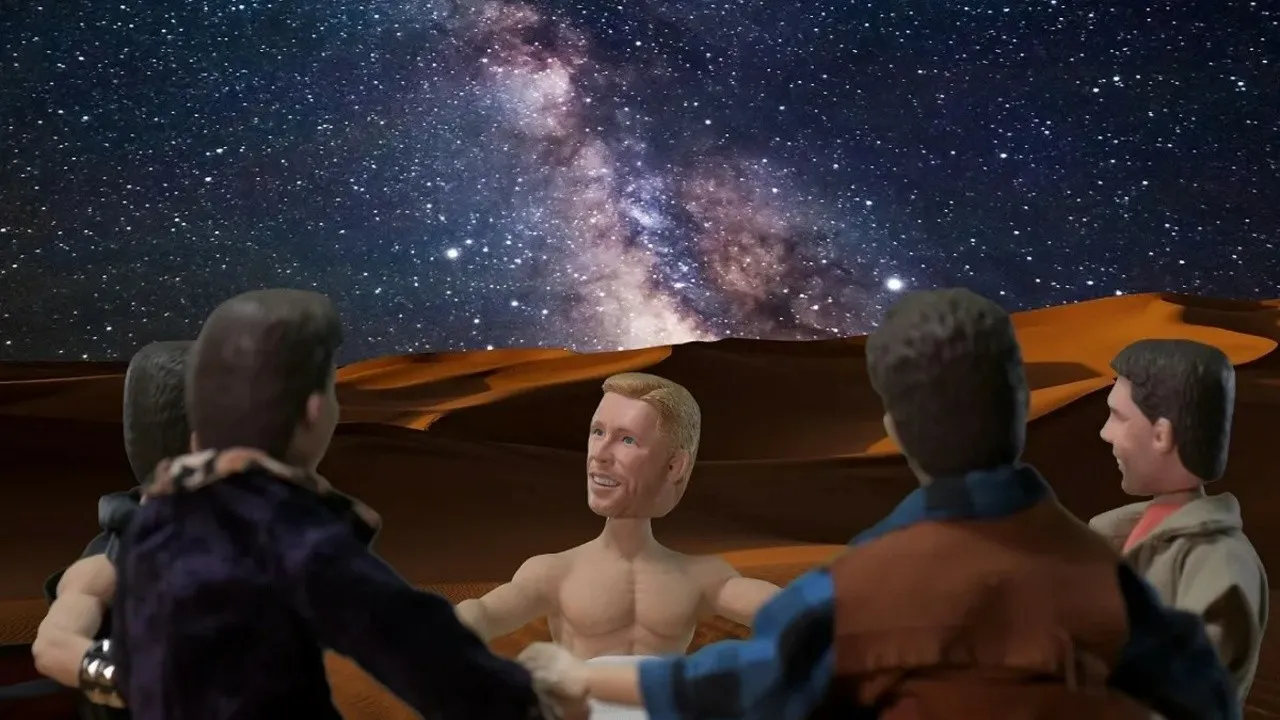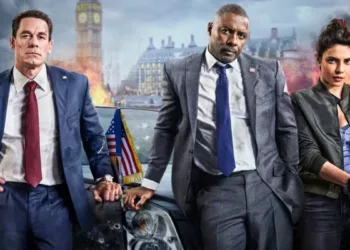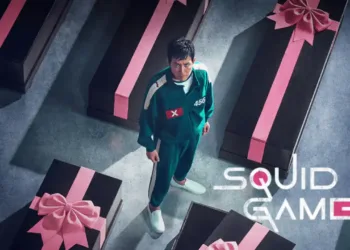With its unusual fusion of animation and live action, The Greatest Surf Movie in the Universe launched audiences into surreal waters. Released in 2024, the film was directed by Nick Pollet and Vaughan Blakey, taking a comedic approach through the medium of stop-motion. Its ambitious premise imagines a future where a global vaccine has inadvertently erased all memory of surfing from humanity.
In response, the divine surfing deity Huey tasks champion surfer Mick Fanning with recruiting fellow greats to make a movie restoring surfing’s legacy. We join Fanning as he navigates this strange new world, striving to rekindle lost passions. Through its daring narrative, the film aims to provoke thought on cultural preservation against the tides of change.
Yet for all its imagination, some aspects of storytelling and thematic development feel restrained by the film’s own waves. Repetitive dialogue and one-dimensional characters undermine connection to the surfers’ journey. While authentic surfer voices and breathtaking footage offer highlights, these are sometimes detached from the larger critique.
With its heart in the right place yet head occasionally underwater, The Greatest Surf Movie in the Universe rides a line between ambitious experiment and flawed execution. By turns intriguing and perplexing, it challenges viewers to consider surfing’s place in a rapidly shifting sea of culture and memory. One can only speculate how tightening discipline may have helped the film catch a more perfect wave.
An Unsteady Narrative Ride
The Greatest Surf Movie in the Universe takes viewers on quite a journey through its unconventional storytelling. We follow champion surfer Mick Fanning as he’s tasked by the surfing god Huey with a strange mission—reuniting top athletes and reminding them of the now forgotten sport.
Mick sets about recruiting athletes like Mason Ho and Griffin Colapinto, retelling the same backstory each time of a pandemic, vaccine side effects, and global amnesia regarding waves. While creatively presenting this fantastical premise, repeating the exposition ad nauseam drags down the narrative pace.
Character development also feels half-baked. Motivations are simplistically conveyed, leaving viewers wanting more insight into these legendary figures. The script leans heavily on crude jokes rather than meaningful exchanges between personalities we never truly get to know.
Sections of breathtaking surf footage break up the repetitive storyline, but different pacing here could have struck a better balance. Key moments like the climactic battle fly by with missed opportunities for nuanced drama. Rather than tension, we’re left with a scattering of naked dolls in brown goo.
While its unconventional format holds promise, tighter scripting was needed to weave humanity into this strange new world. The film strives to rekindle passion but keeps characters and audience at arm’s length. With richer character arcs and time spent exploring what waves meant to these athletes, the emotional core could have felt fuller—and the ride itself, far smoother.
As it stands, the narrative zigzags between creative highs and storytelling lows that undermine full engagement with its thought-provoking premise. Taming erratic momentum may have helped this strange tale catch a more perfect wave.
Riding the Waves of Possibility
The stop-motion work powering The Greatest Surf Movie in the Universe deserves praise. Bringing these dolls to life must have demanded tireless attention to detail. But the limitations of puppetry eventually constrain how deeply the visuals can explore this fascinating premise.
While impressively crafted, the Surfer dolls lack nuanced expressions or subtlety of movement to fully convey complex emotions. Their wooden faces and rigid frames work against injecting deeper drama into key moments. The cinematography adequately frames each setting yet rarely feels dynamic or visually striking.
During surf footage, the commissioned songs rarely enhance the raw emotion of those tiny figures riding gigantic waves. One can’t help but feel fully immersed in the experience through a live performer’s eyes rather than these detached POV replays. The visuals seem to serve the whimsy of their world more than the weightier themes exploring cultural preservation.
With such meticulous animation otherwise, one can only speculate how freer directorial choices may have pushed this technical achievement to a higher artistic plane. A more creative cinematography approach could have better merged man and puppet to deeper pull viewers inside this surreal scenario.
While impressing up close, these dolls remain a veneer distancing the audience. Their constraints leave an impressionistic premise only partially realized. For all its innovation, this blending of mediums still struggled to ride the crests of its most ambitious dramatic possibilities.
Riding Waves of Ideas
The Greatest Surf Movie takes an imaginative swing at pondering surfing’s place in a changing world. Its premise of a vaccine wiping collective memory of waves provokes thought on cultural preservation against the tides of time.
Ideas around lost passion resonate, yet the film struggles to fully explore such weighty themes. Its ambitious aims are undercut by one-dimensional characters lacking nuance. With richer portraits of these athletes’ relationships to surfing, the commentary on a sport’s complex commercialization and evolution could have run deeper.
An immature sensibility often drowns out subtler social musings. Crude attempts at humor undermine investment in its thought-provoking undercurrents. With a more disciplined tone, perhaps room would remain to ride contemplative waves instead of just skimming their surface.
By opening surreal doors around memory’s resilience, this strange narrative catches glimpses of insightful cultural critique. But an uneven approach keeps such perspectives only partially glimpsed. Tighter control of tone and character depth could have strengthened how fully its ideas caught breakers to shore.
Potentially striking a nerve around traditions shifting with time, the film ultimately paddles out only partway. Its heart seems in surfing’s passionate place yet struggles to catch the same perfect wave of expression its athletes somehow flawlessly master.
Riding the Waves of Humor
The Greatest Surf Movie takes many chances with its unconventional storytelling, yet committing fully to its comedy was a gamble it rarely won. While spirited in pushing boundaries, vulgar attempts at humor often undermine the film’s abler qualities.
Scattered wit keeps certain elements engaging, like Hemsworth’s enjoyable flair. Yet so much relies on vulgarity over actual cleverness that levity falls flat rather than enhancing the experience. Shock value replaces nuanced wit, distancing viewers seeking genuine laughs.
This imbalance proves the film’s biggest wipeout. Its ambitious exploration of cultural memory deserves a tone encouraging investment, not one shattering credibility. Light interludes feel detached from thought-provoking undercurrents—two disparate films colliding.
With discipline, room remained to ride both introspective and comedic waves. A deft balancing of levity and gravitas could have kept audiences fully immersed in its fantasy world and surreal upheaval of surfing’s past.
Humor serves best when emphasizing what it accompanies, not contradicting. But by drifting from pathos to puerility, this narrative spilled its best opportunities to catch comedy’s perfect break. A surer directorial hand may have steered its mood toward catching fuller, smoother rides.
Riding Off Course: A Wasted Opportunity
While The Greatest Surf Movie brought real legends to life, it failed to truly capture what made them waves. Hearing authentic voices like Mick Fanning and Mason Ho gave the Dolphin Party credibility. But screened simply as detached highlights, their passions felt disjointed from characters we never connected with.
More could have been made of tapping surf royalty’s cultural knowledge and experiences within the plot. Their perspectives could have added depth to both narrative and social commentary. Instead, they were reduced to mere vehicles recounting repetitive exposition.
Breath-taking footage reminded me why these athletes were icons. Yet without a weaving understanding of why specific waves held meaning, the visuals remained impressions lacking heart. Suspending majestic rides separately from characterization was a missed chance to immerse audiences in surfing’s soul.
With legends sidelined and sport shown but not explored, this film only skimmed ocean surfaces. A wasted opportunity to plumb cultural reservoirs through unifying script and stars. Representation became superficial, where deeper waves lay waiting to strengthen the narrative and theme.
By drifting from cultural accuracy’s shore, this strange romp missed catching perfect breaks. Only tenuous connections formed between man and passion, man and message, leaving an impression of potential promise imperfectly shaped.
Riding the Waves of Possibility
The Greatest Surf Movie sets an ambitious goal in exploring surfing’s cultural role through surreal storytelling. Its imaginative premise and technical strengths show promise, yet uneven storytelling and tonal inconsistencies ultimately limit its impact.
At its best, the film hints at thought-provoking themes around memory and traditions. But an immature sensibility holds back deeper contemplation. Richer characters and a better hand may have balanced such meaningful undercurrents.
Technical achievements like animation and authentic voices offer high points. Yet weaker areas like repetitive plotting and one-dimensional figures keep the film from consistently staying upright. Tighter discipline could have helped harness imaginative highs.
Unrealized potential remains the impression. With a surer directorial hand shaping both comedy and drama, this fantastical wave may have ridden farther toward shore. As is, it catches glimpses of possibility against a choppy ride.
At heart lay ambitions to consider cultural preservation against changing tides. But uneven execution stopped full exploration. With commitment matching its vision, this curious romp could have grasped profound undercurrents beneath its surface. Instead, it paddles partway toward cultural critiques only dimly glimpsed.
The Review
The Greatest Surf Movie in the Universe
The Greatest Surf Movie aims high in imagining surfing's place through surreal storytelling. Yet an erratic blend of technical skill and uneven narrative holds the film ashore from fully catching the breakers of its most thought-provoking ambitions. While commendable for creative premises and technical feats, a lack of discipline in tonally uniting drama and comedy ultimately wipes much of its potential message. Through glimpses of surfing passion and cultural critique, it hints at deeper waters left, alas, unfathomed.
PROS
- Imaginative premise conceptualizing surfing's cultural role
- Ambitious thematic aims around memory, identity, and change
- Technical accomplishments in animation and use of real surfers
- Glimpses of insightful social commentary
CONS
- Uneven tonal balance undercuts drama with immature comedy
- Repetitive plotting and one-dimensional characters
- Lack of narrative discipline holds back cultural examination.
- Inconsistent direction interrupts flow between elements
- Potential for deeper characterizations and surfing depictions untapped











































